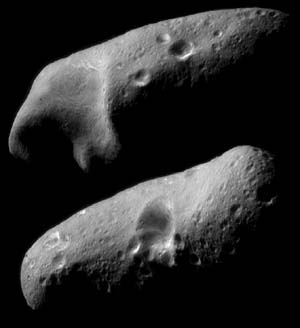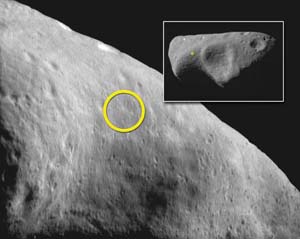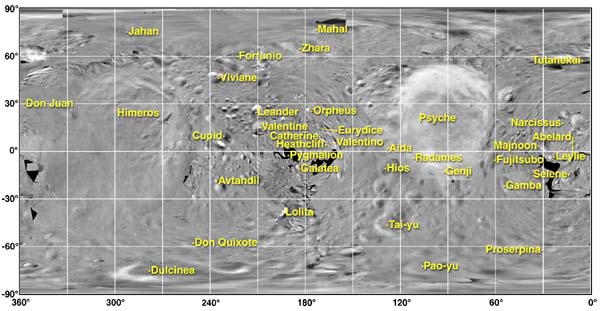Near-Earth Asteroids (NEAs)
Asteroids with orbits that bring them within 1.3 AU (121 million miles/195 million kilometers) of the Sun are known as Earth-approaching or near-Earth asteroids (NEAs).
It is believed that most NEAs are fragments jarred from the main belt by a combination of asteroid collisions and the gravitational influence of Jupiter. Some NEAs may be the nuclei of dead, short-period comets. The NEA population appears to be representative of most or all asteroid types found in the main belt.
NEAs are grouped into three categories, named for famous members of each: 1221 Amor, 1862 Apollo, and 2062 Aten.
Amors
Asteroids which cross Mars' orbit but do not quite reach the orbit of Earth. Eros, represented here, is a typical Amor.
Apollos
Asteroids which cross Earth's orbit with a period greater than 1 year. Geographos represents the Apollos.
Atens
Asteroids which cross Earth's orbit with a period less than 1 year. Ra-Shalom is a typical Aten.
Approximately 250 NEAs have been found to date, probably only a few percent of their total population. The largest presently known is 1036 Ganymed, with an approximate diameter of 25.5 miles (41 kilometers).
Estimates suggest at least a thousand NEAs may be large enough (0.6 mile -1 kilometer- or more in diameter) to threaten Earth.
Many bodies have struck Earth and the Moon in the past, and one widely accepted theory blames the impact 65 million years ago of an asteroid or comet at least 6 miles (10 kilometers) in diameter for mass extinctions among many lifeforms, including the dinosaurs. Other theories suggest that the chemical building blocks of life and much of Earth's water arrived on asteroids or comets that bombarded the planet in its youth.



